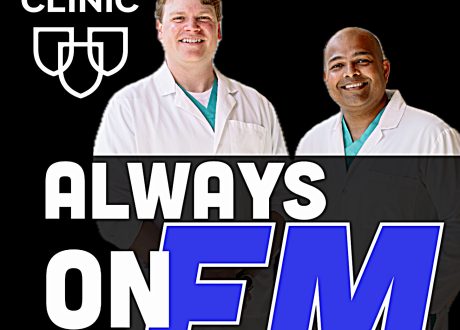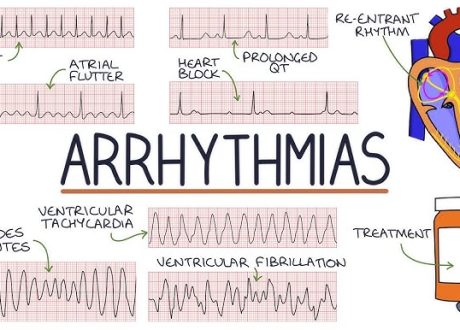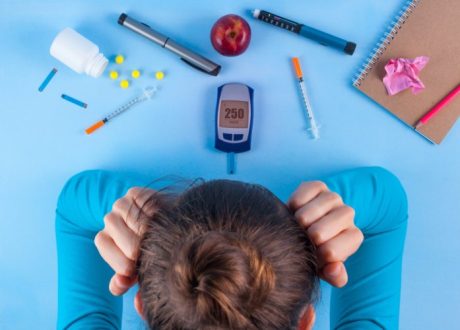Amiddle-aged man with a medical history of hypertension developed sudden-onset palpitations and chest pain while watching television. Emergency medical services diagnosed the patient with supraventricular tachycardia (SVT) and administered adenosine, which terminated the tachyarrhythmia. The patient’s chest pain also abated promptly with the resolution of the SVT, and the patient denied any further symptoms. The patient was taken to the emergency department (ED), where electrocardiographic findings demonstrated normal sinus rhythm without any ST-deviation. The patient remained asymptomatic and denied exertional and nonexertional chest discomfort or dyspnea prior to the episode.
The emergency physician performed a physical examination and ordered laboratory tests, which yielded normal results except for an elevated troponin I level of 1.82 ng/mL. A cardiologist was consulted, and the patient agreed to admission to the coronary care unit for further management. The repeated troponin I testing at 6 hours later revealed that the level had increased to 5.95 ng/mL, but the patient remained asymptomatic.
Coronary catheterization the following day demonstrated no angiographic evidence of coronary artery disease. However, during the procedure, the patient experienced an iatrogenic, catheter-induced, right coronary artery dissection. The cardiologist successfully placed a drug-eluting stent, and the patient was discharged the next day on dual antiplatelet therapy.
Teachable Moment
The incidence of SVT is estimated to be 35 per 100 000 persons.1 Supraventricular tachycardia is typically sudden-onset, paroxysmal, and patients will most commonly report palpitations followed next in frequency by chest pain, dyspnea, lightheadedness, and syncope.2 Fortunately, SVT is rarely life-threatening and has a favorable prognosis, being most common in a relatively younger population without ischemic heart disease.2 However, despite a lack of supporting evidence, a proportion of patients will undergo low-yield testing, including troponin (48%-77%), complete blood cell count (81%-93%), electrolyte levels (84%-93%), thyroid function (18%-46%), and chest radiography (30%-33%).3,4
In the absence of acute coronary occlusion, an elevated troponin level in the setting of SVT is likely to be secondary to coronary ischemia that occurs with increased oxygen demand or shortened diastole.3,4 Moreover, the typical patient with SVT will have a low pretest probability for coronary artery disease, and positive troponin test results are relatively more likely to be false positive for acute coronary occlusion. A 2019 systematic review3 found that two-thirds of patients who presented with SVT underwent troponin testing, and 32% of those tested had an elevated level. However, despite this significant positive-result test rate, none of the 7 included studies found an association between a positive troponin test result and coronary artery disease (defined as positive noninvasive test or angiogram).3 Unfortunately, the certainty of this evidence is low because all of the studies were retrospective, and the meta-analyses demonstrated considerable heterogeneity. Therefore, one cannot draw definitive conclusions with regard to any troponin testing in patients with SVT as a whole.
In a population among which the prevalence of acute coronary occlusion will be very low, an elevated troponin level may prompt downstream testing that will have significant risk with no net benefit. In the ED, a positive troponin test result will increase length of stay for serial testing or waiting for inpatient telemetry beds, contributing to the safety risks associated with ED crowding.5 Patients may also be subjected to the risks of hospitalization, antiplatelet therapy, anticoagulation, and coronary angiography. Aside from iatrogenic coronary artery dissection, coronary angiography is associated with periprocedural stroke, local vascular complications, and post-contrast acute kidney injury.
We therefore advocate for more judicious troponin testing, limited to cases where there is a suspicion of acute coronary occlusion based on a patient’s symptom pattern and focused physical examination. For example, after SVT termination, persistent chest discomfort and diaphoresis with nondiagnostic electrocardiogram may suggest ongoing ischemia that warrants further investigation.
Supraventricular tachycardia is a common tachyarrhythmia in patients who have generally low cardiovascular risk. Routine troponin testing in these patients may result in downstream harm and costs associated with ED crowding, hospitalization, antiplatelet therapy, anticoagulation, and coronary angiography with no patient-centered benefit.
Corresponding Author: Robert Allen, MD, Department of Emergency Medicine, SUNY Health Sciences University, 450 Clarkson Ave, Brooklyn, NY 11203 (robert.allen@downstate.edu).
Published Online: March 29, 2021. doi:10.1001/jamainternmed.2021.0266
Conflict of Interest Disclosures: None reported.










